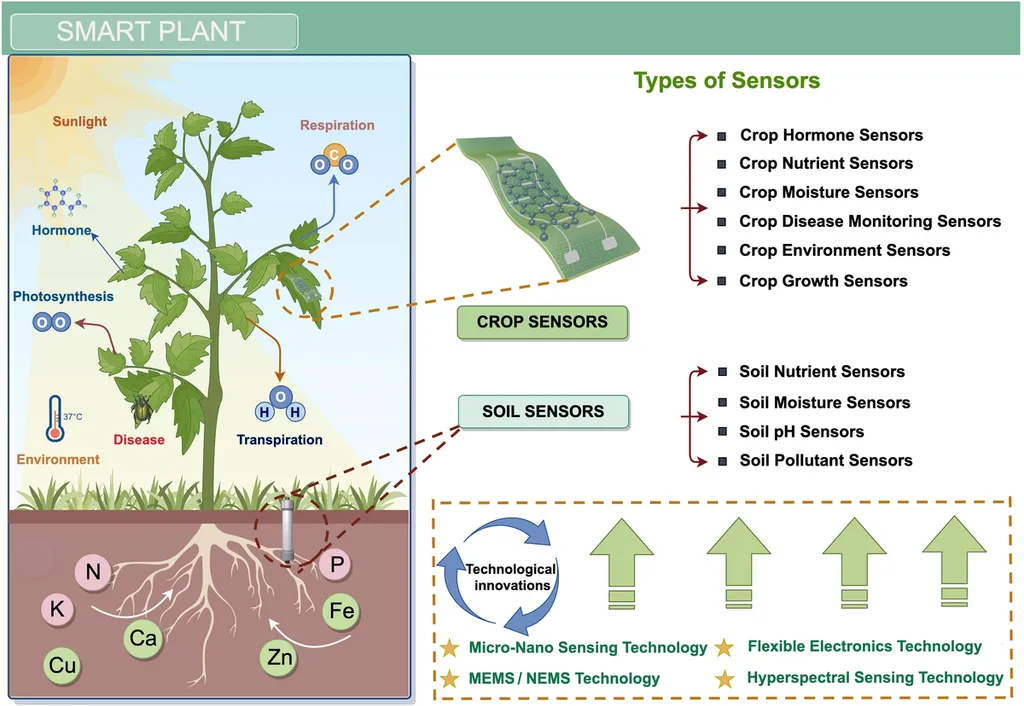In the heart of Beijing, a team of researchers from the Intelligent Equipment Research Center at the Beijing Academy of Agriculture and Forestry Sciences is pioneering a technological revolution in agriculture. Led by Dr. Zhang Le, the team is exploring the potential of electrochemical sensors to detect plant active small molecules, a breakthrough that could redefine precision agriculture and smart farming.
Plant active small molecules are the unsung heroes of the agricultural world, playing a pivotal role in plant growth, development, and resilience to environmental stress. “Achieving highly precise quantitative analysis of these active small molecules is vital for promoting precise management practice in agriculture and accelerating the development of smart agriculture,” says Dr. Zhang Le, the lead author of the study published in the journal 智慧农业, which translates to ‘Smart Agriculture’.
The team’s research, a comprehensive review of current academic literature, highlights the significant advantages of electrochemical sensors. These sensors offer high sensitivity, excellent selectivity, and low cost, enabling them to detect trace levels of various active small molecules in plant samples. Moreover, they hold the promise of real-time and in-situ detection, a game-changer for the agricultural industry.
The core sensing mechanisms of different electrochemical sensor types, signal amplification technologies for enhancing detection performance, and their potential in practical applications are systematically summarized in the study. The research also explores the evolution of sensor technology from traditional in vitro detection to more challenging in vivo detection and in-situ real-time monitoring methods.
Nanomaterials play a crucial role in this technological advancement. They are instrumental in constructing high-performance sensing interfaces and significantly enhancing detection sensitivity and selectivity. The study also discusses the innovative integration of electrochemical sensors with cutting-edge flexible electronic technology and powerful artificial intelligence (AI)-based data analysis, along with their potential for broad application.
However, the journey is not without its challenges. The complex matrix within plants can cause sensor response signals to drift, leading to a decline in stability and sensitivity. The use of liquid electrolytes can dilute the target molecules’ concentration in plant samples, lowering detection accuracy. Moreover, the transition from principle development to mature productization and industrialization of electrochemical sensors is relatively lengthy, and there are few types of sensors available for the detection of plant physiological indicators, limiting their application in actual agricultural production.
Looking ahead, the team prospective analyzes key research directions. These include continuously improving sensor performance indicators such as sensitivity, selectivity, and reliability, exploring and optimizing electrolyte material systems with stronger adaptability to significantly improve detection accuracy and long-term stability, and promoting deeper integration and innovation of sensor technology with advanced micro-nano electronic technology and powerful AI algorithms.
The core objective of this review is to provide a theoretical guidance framework for in-depth research and systematic performance optimization of electrochemical sensing technology for plant active small molecules, as well as practical guidance for the actual application of related sensors in complex plant substrate environments.
This research could shape future developments in the field by providing a roadmap for the integration of advanced technologies in agriculture. The potential commercial impacts are substantial, with the promise of increased crop yields, improved plant health, and more efficient resource management. As Dr. Zhang Le puts it, “This is not just about detecting molecules; it’s about revolutionizing agriculture.”

